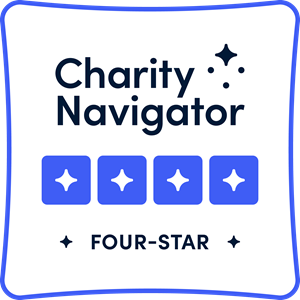Visiting Balkan Jews reminded us of the long tradition of mutual responsibility
Originally published in J. The Jewish News of Northern California on July 22, 2024.

Igor Bencion Kožemjakin reads aloud from an antique Torah scroll housed in the Sephardic synagogue of Sarajevo. (Courtesy)
Igor Bencion Kožemjakin clutched the no-longer-kosher Torah scroll and read from it aloud as our group listened to his billowing voice across the otherwise-empty Sephardic synagogue in Sarajevo.
The ark was decorated under an arch of brilliant-colored tiles made up of bright blues and reds. To us, its design felt more reminiscent of a mosque than a synagogue.
Today there are only about 1,000 Jews left in all of Bosnia and Herzegovina. Kožemjakin, our tour guide and the community’s leader, told us that he is the last Jew in Sarajevo who can still read from the Torah.
It is easy to hear this story and become discouraged about the state of Jewish communities in Europe. Sarajevo, long known as “Little Jerusalem,” was once a melting pot of Muslims, Christians and Jews. At one time, it was about 20 percent Jewish.
Like many other communities ravaged by the Holocaust, it suffered extreme losses. But as our group of 19 young Jewish professionals from the Bay Area sat with Kožemjakin, the community felt anything but weak.
We were deeply affected by this weeklong journey to Bosnia and Herzegovina and its neighbor Croatia in early June with a group selected by the American Jewish Joint Distribution Committee’s Entwine program for young adults and the San Francisco-based Jewish Community Federation and Endowment Fund.
The trip was invaluable. It helped us learn critical lessons from people keeping Judaism alive in another corner of the globe, recognize the interconnectedness of the Jewish world and underscore our responsibility to take care of one another. It also built bonds among young leaders in the Bay Area Jewish community. Experiencing the trip together kept us from feeling powerless when confronting the realities of European Jewry. It also strengthened our resolve to create a richer and stronger Jewish Bay Area community when we returned home.
While traveling through the Balkans, we were reminded of how different it is to live in the Bay Area, home of the fourth largest Jewish community in the United States with roughly 350,000 people who identify as Jewish. We often take for granted how easily we can find a synagogue, be invited to a Shabbat dinner or Jewish event and engage in the time-honored tradition of playing “Jewish Geography.” Not everyone is so lucky.
We learned a lot from the Jewish community in Sarajevo, which was a pillar of support and safety during the Bosnian War in the 1990s. The Jewish Community Center we visited there supported hundreds of people during that devastating war. The JCC assisted the wounded and the hungry, operating a soup kitchen, hospital and community radio when resources were scarce. It did so with the help of the Joint Distribution Committee, the world’s leading Jewish humanitarian group and a longtime Federation partner.
That spirit and the Jewish values of tikkun olam and tzedakah continue to this day. Kožemjakin travels throughout the Balkans to speak at interfaith gatherings and educate young Jews about the importance of involvement, engagement and crossing lines of difference to cultivate peace and understanding.
We visited two Croatian cities as well. In Split, a father-daughter team shared their community’s history and fears that their small synagogue is at risk of shuttering, which would cut off a lifeline for a Jewish community that has been in the region since the 7th century. In Zagreb, a 93-year-old Holocaust survivor named Melita offered her harrowing personal story and her decades of research on fellow survivors.
While the memories and the people in each place we visited were different, the message was always the same: We are resilient, and we are here together to repair our world.
It is powerful that no matter where we are in the world, there are Jewish values that we all share. This resonant lesson was all the more inspiring because we were connecting and learning together.
Living the heartbreak and history of our shared faith on this trip allowed us each to dive deeper into our personal responsibilities and the roles we will play as leaders in our community back home. We feel more energized and empowered to connect with the Bay Area Jewish community, whether by volunteering at a local Jewish nonprofit, starting a giving circle to support organizations that make the community stronger, joining the board of a Jewish organization we believe in, or encouraging our friends and family to become more involved too.
At a particularly challenging time to be a young adult and Jewish in America, seeing a small number of people do so much with so little reinvigorated us and reminded us of why now — more than ever — we need to continue our legacy of “arevut,” or mutual Jewish responsibility, and of tikkun olam for our community’s future at home and abroad.


